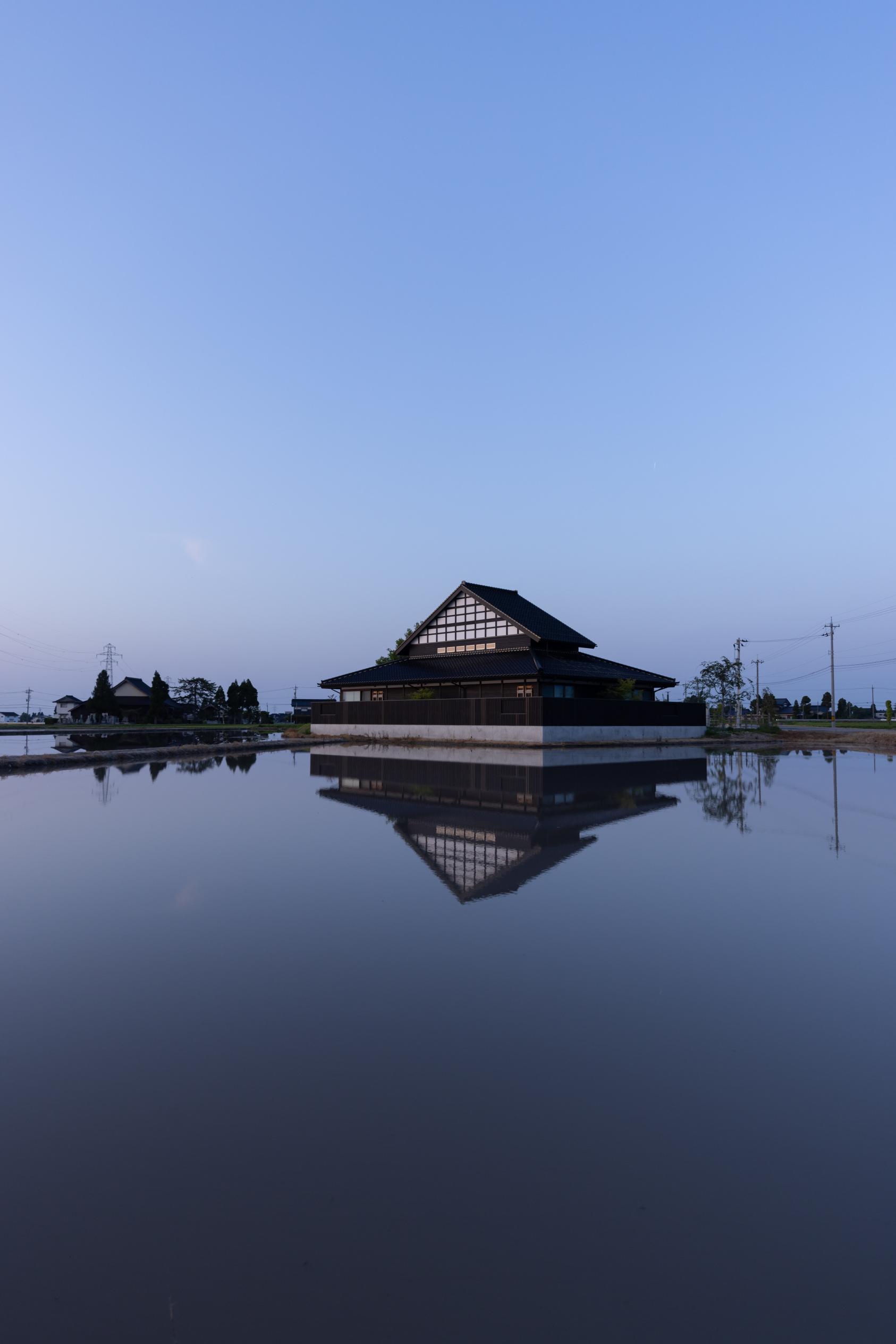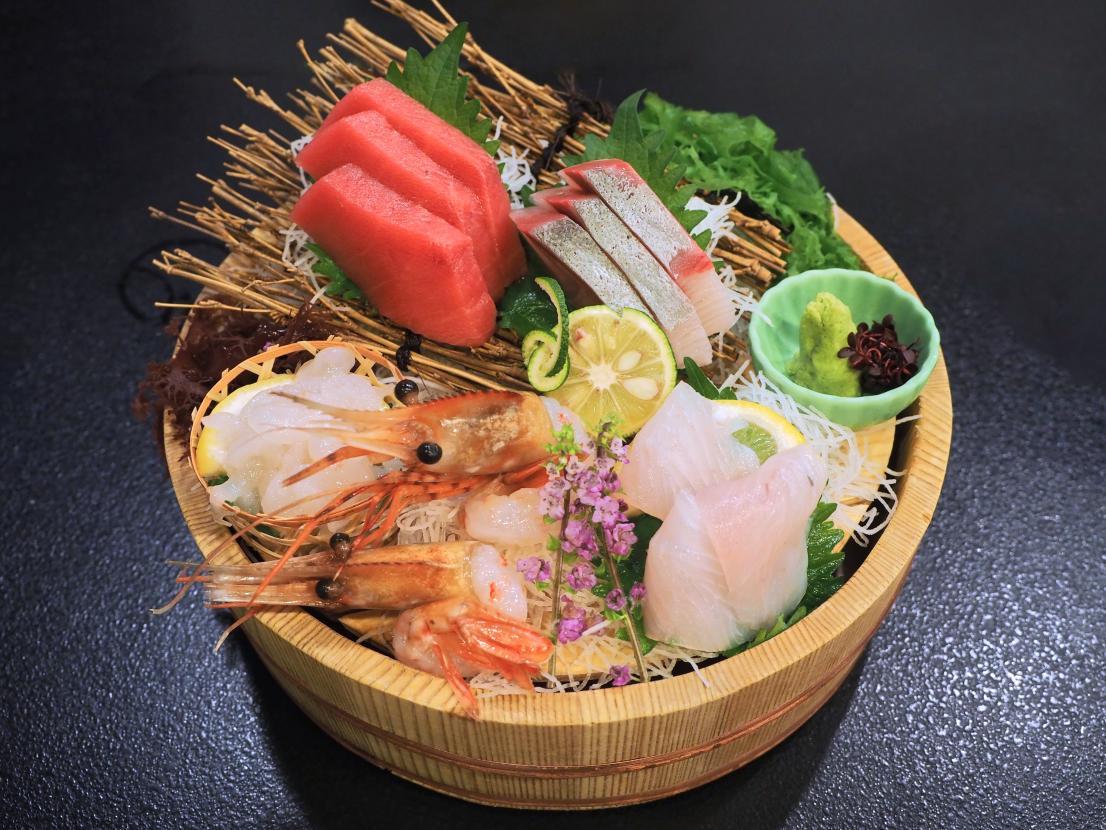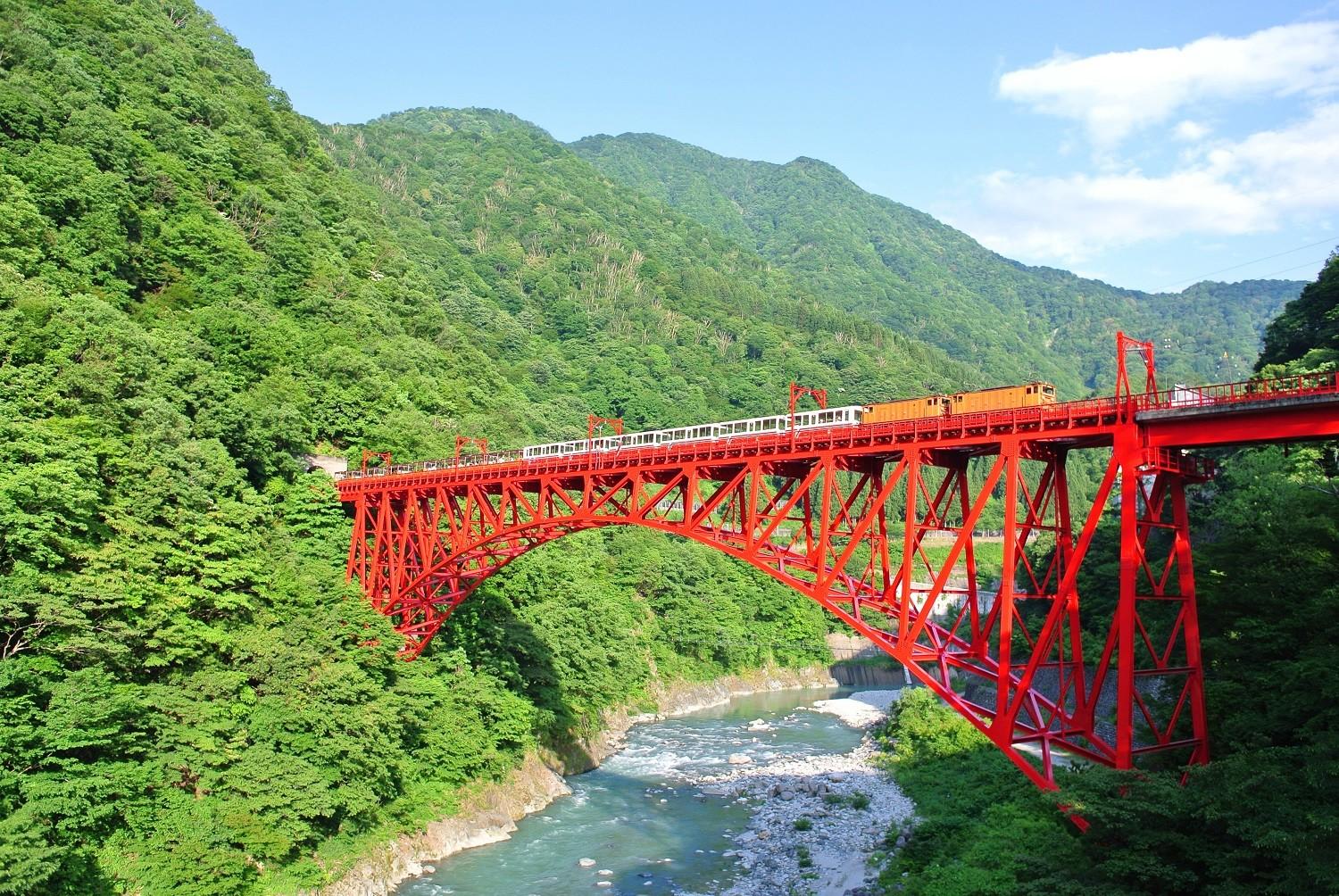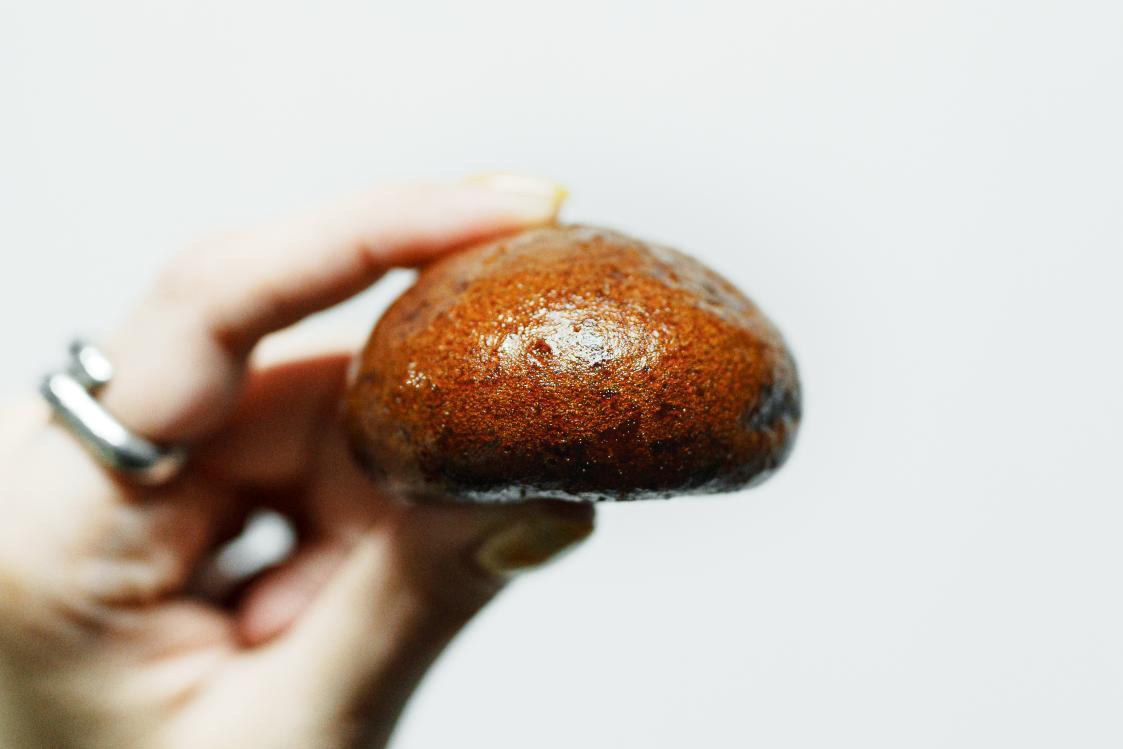
What is dispersed settlement?
The Tonami Plain, located in the western part of Toyama Prefecture, is an alluvial fan formed mainly by Shogawa River and Oyabe River. A dispersed settlement with over 7,000 houses (farmhouses) surrounded by homestead woodlands extends in the area of approx. 220 km2. The dispersed settlement on the Tonami Plain originates from farmers that used to build their houses in the middle of their cultivated rice fields so that they could easily manage the water for their own rice fields in the alluvial fan, which usually had good drainage and thus was not suitable for wet-paddy rice agriculture, and that farmhouses were scattered apart from each other naturally.
Characteristic of the dispersed settlement on the Tonami Plain is that each house has been surrounded by homestead woodland. It is called “kainyo” in this region. Kainyo has protected houses and people’s lives from cold seasonal winds and snowstorms in winter and sunlight in summer. Fallen leaves and the branches of cedar trees were used as important fuel for daily cooking and heating baths. In addition, cedar, Japanese zelkova, and bamboo were also used as materials for building new houses as well as materials for various everyday tools.
In this way, people in a dispersed settlement in the old days led lives that were extremely close to self-sufficiency, cultivating the farmland around their houses to grow rice and vegetables, and procuring the materials needed for their daily lives from the homestead woodlands. A settlement pattern of the dispersed settlement can be said to be the result of the wisdom that ancestors who lived in the Tonami Plain kept for us by interacting with nature for symbiosis between humans and nature.
Conservation of dispersed settlements and community planning
In the old days in the Tonami region, there was a saying of “Even sell your land but don’t sell your homestead woodland.” In the modern lifestyle, the significance of the homestead woodland has been lost, and more and more residents come to cut down trees on their premises when they expand or renovate their homes because of the risk of trees falling due to strong winds as well as the expense and labor required for the disposal of fallen leaves and pruning.
The decline in homestead woodlands is a huge negative for the landscape of a dispersed settlement. It is a valuable cultural asset that has been nurtured in the long history and the cultural environment of the Tonami Plain. Efforts are underway to conserve the dispersed settlements through discussions among the government, local community, and residents together, including enacting landscape ordinances and implementing pruning support projects.
Beautiful landscape of dispersed settlements
The Sankyoson Observation Deck and Panoramic Area, which has been designated as one of the Furusato Viewpoints by Toyama Prefecture
It is a spectacular spot where you can overlook the grand and beautiful scenery of the dispersed settlements.
You can look out over the expansive Tonami Plain from the observation deck at an altitude of 433 meters, and if the weather is clear, you can see the Tateyama Mountain Range and Toyama Bay in the distance.
Dispersed settlements offer us beautiful scenery from season to season throughout the year. During the rice-planting season, in early May in particular, you can see a fantastic rural scenery that the plain turns golden color as the evening sun sparkles on the rice paddy fields filled with water. Please enjoy the majestic panoramic view from the observation deck and the beauty of dispersed settlements created by people’s lives and nature.
Rakudo-an
Rakudo-an, an inn and restaurant made from a renovated 120-year-old old folk house, is located in the beautiful rural landscape of dispersed settlement villages of Tonami City, Toyama Prefecture. It is a small, luxurious inn that is limited to three groups of guests per day by taking advantage of Toyama’s traditional folk house called Azumadachi and surrounded by rice paddy fields. The house is made with natural materials from ancient times, such as earth, wood, Japanese paper, and silk, and provides the space seamlessly connected to the surrounding natural environments and history with folk arts, crafts, and contemporary arts installed in harmony. On the premises, there is a restaurant, il clima, which serves Italian cuisine unique to Toyama, using abundant ingredients from the sea, mountains, and villages of Toyama.
The concept of Rakudo-an is for guests to experience Toyama’s Dotoku through the surrounding landscape, space, arts, cuisine, and activities. Dotoku is like the dignity produced by the land and created by humans and nature together. It is said that Muneyoshi Yanagi, founder of the Mingei movement, stated, “Here is Dotoku,” when he visited Toyama and met people who were living in a harsh but rich natural environment with gratitude for the blessings.
A dispersed settlement in Tonamino, where Rakudo-an is located, embodies it. Houses surrounded by Kainyo are scattered around the countryside, which is a rice farming village unique to Japan, and is selected as one of the country’s priority Satochi Satoyama areas. Its landscape that has been created for over 500 years is the result of the coexistence between nature and humans. People have led a Japanese sustainable lifestyle there. The trees in the homestead woodland circulate as lumber for the houses and fuel, and the area is also a place to grow diverse living things. In addition, extensive irrigation canals in the area, water-filled rice fields, and homestead woodlands have shown that they have environmental significance, including that they lower the ground surface temperature by 13 degrees compared to urban areas. While transmitting the wisdom of coexistence between nature and humans, which has been practiced long before the words of the SDGs emerged, Rakudo-an aims to be an inn where visitors can be relaxed by experiencing Dotoku in Toyama.
In dispersed settlements in Tonami, not only that beautiful landscape but also culture, faith, and community are about to be lost as abandoned farmland is increasing because of the decrease in demand for rice and the shortage of successors for rice farming, and the homestead woodlands and Azumadachi old folk houses are decreasing in the course of lifestyle changes. Therefore, making use of the inn, Rakudo-an, as a base, we advocate regenerative tourism, which will lead to the revitalization of both visitors and the region, and take initiatives to preserve this dispersed settlement and pass it on to future generations.
Dotoku is not limited to Toyama. There are local Dotoku all over the world, and there exist things where Dotoku is expressed as beauty. What they have in common is “Tarikibi” (finding beauty in the world beyond oneself) that transcends people’s arrangements. At Rakudo-an, we collect and install furniture, crafts, and works of art from all over the world that such Tarikibi is revealed in them. Together with furniture by Pierre Jeanneret and Hans J Wegner, bandaji from Lee Dynasty and chests in the foik art style from Hida, lighting by Poul Henningsen and Jasper Morrison, and rugs from the Bauchi tribe in West Asia, we include high-quality art and crafts in harmony, ranging from artists of old handicrafts and Toyama, such as Keisuke Serizawa, Shoji Hamada, Kanjiro Kawai, and Shiko Munakata, to contemporary artists of Rei Naito.
il clima, our Italian restaurant that expresses its cuisine with Toyama’s ingredients. This means “the climate” in Italian. As we aim to have guests savor delicious ingredients of the day in season, we change our menu day by day. Muneyoshi Yanagi called the look of the utensils as harmonized beyond eras and national borders and the “beauty of complexity.” We hope that visitors to Rakudo-an may spend a peaceful and sound time in this space of the beauty of complexity, connecting to the landscape of the dispersed settlement.
Beautiful landscape of dispersed settlements you can enjoy in Nyuzen Town
There are areas outside of Tonami City where you can enjoy the beautiful scenery of a dispersed settlement. The Funami Caste Ruins Museum is a history museum built on the ruins of a mountain castle at the end of the Middle Ages and has a modern design. There is also an exhibition room, and it is a pleasant place because the castle tower commands the view of villages spreading out on the Kurobe River alluvial fan and the Sea of Japan beyond. During the rice-planting season, dispersed settlements are colored gold by the setting sun. That is a magnificent scenery we would like you to see at least once.































